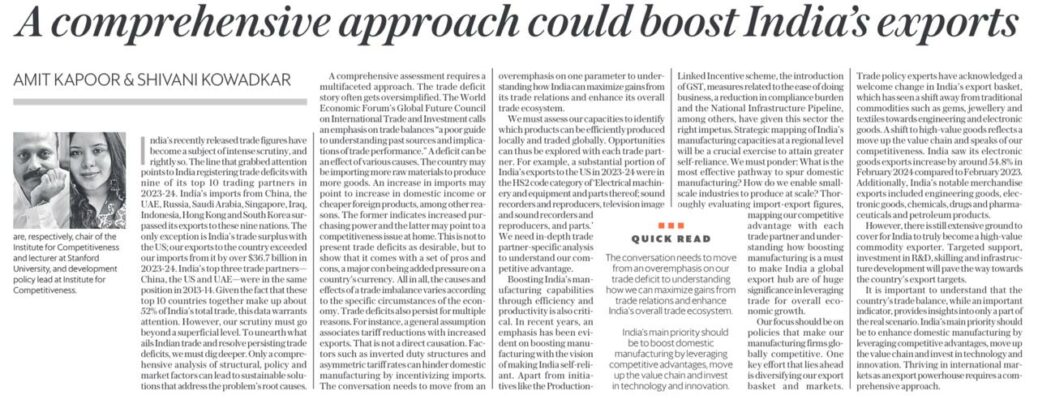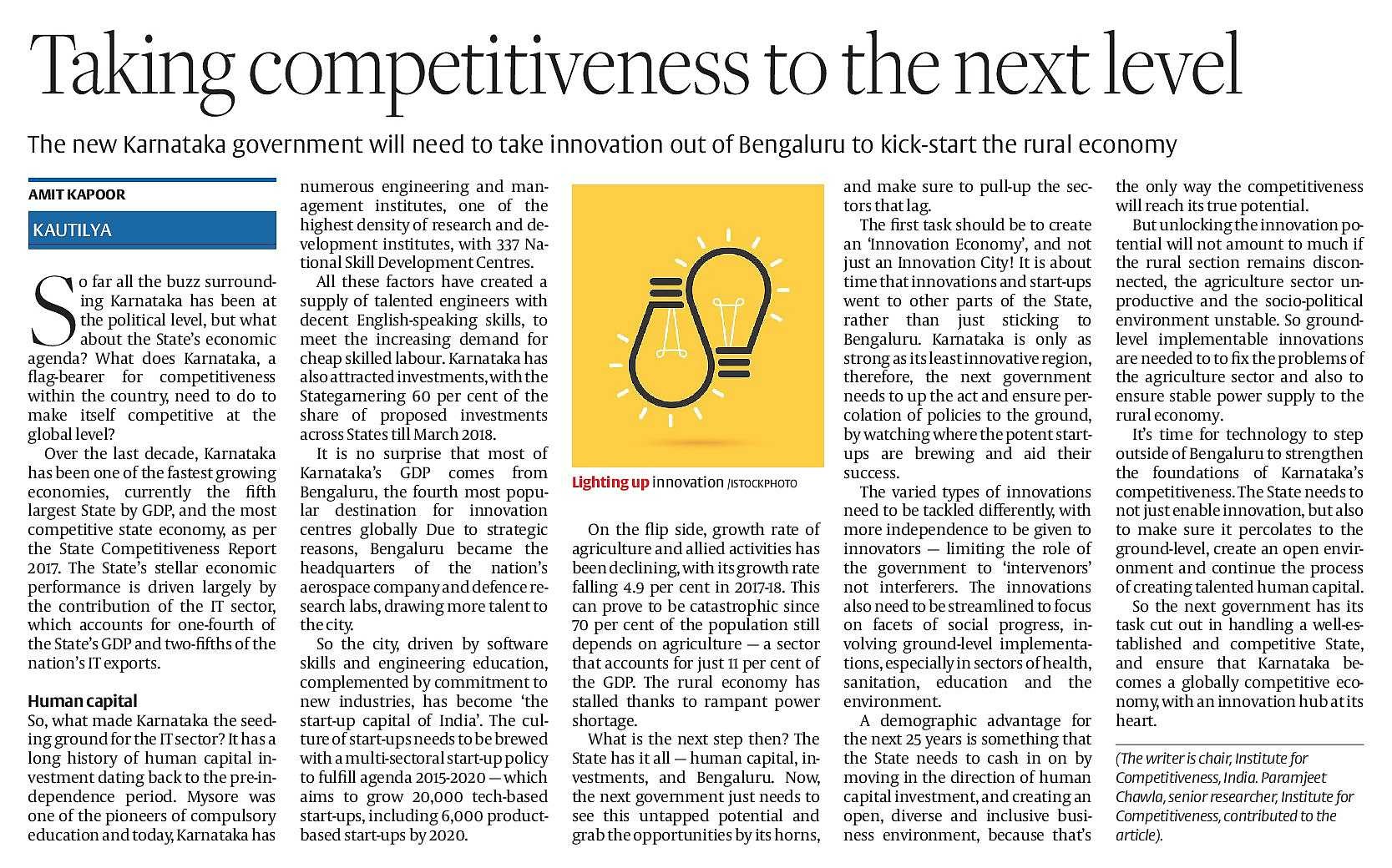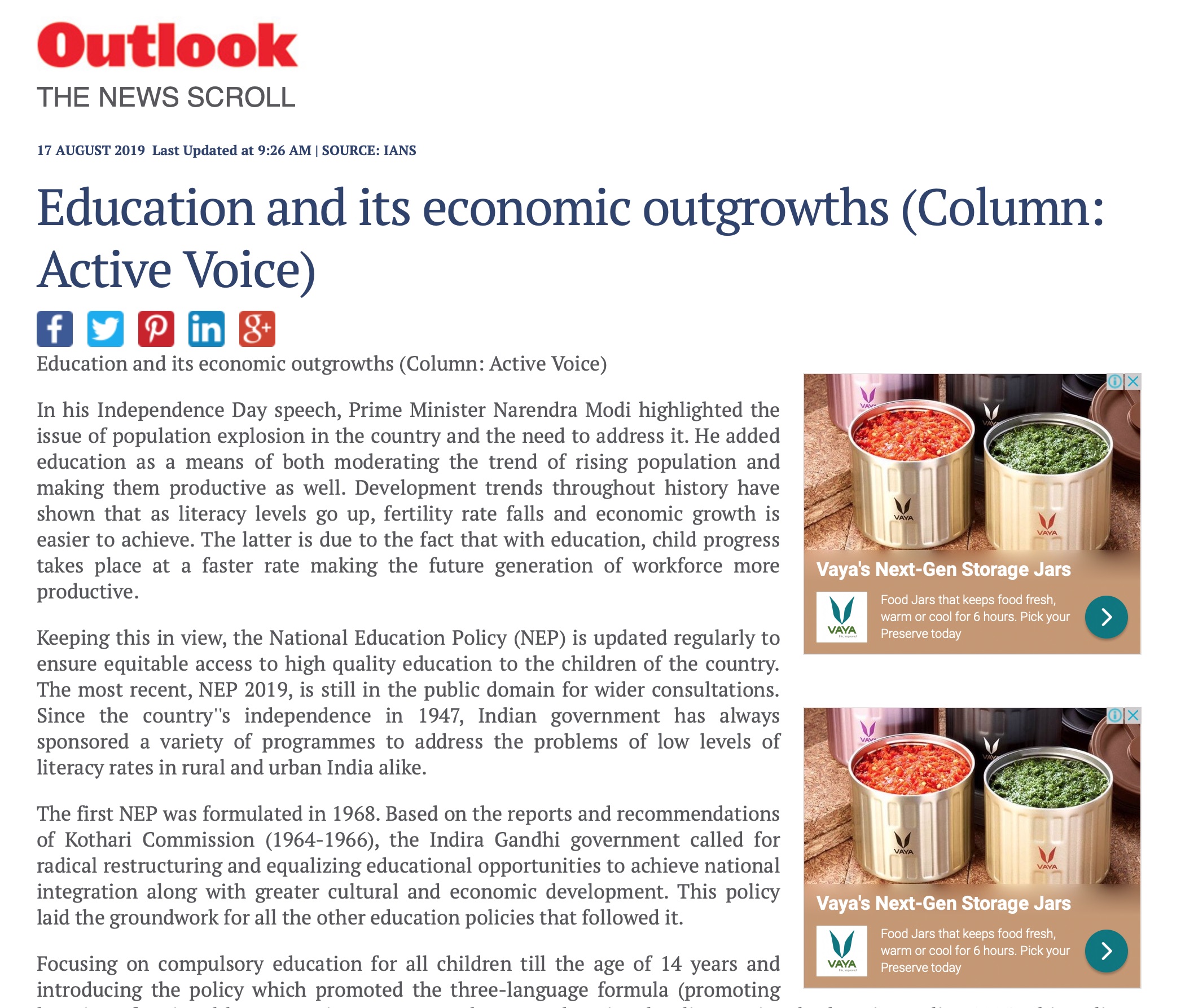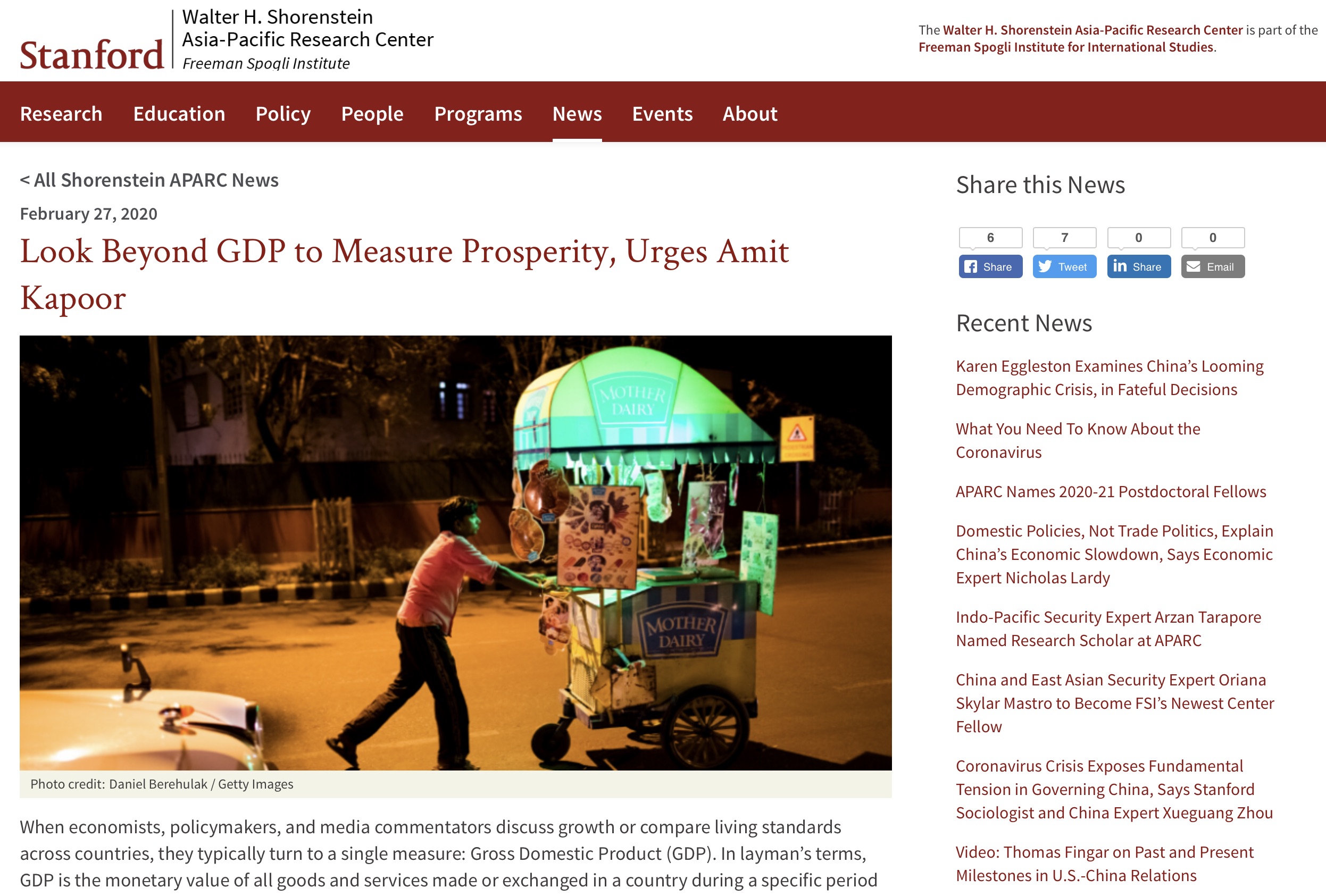By Amit Kapoor & Inputs by Shivani Kowadker
India’s recently released trade figures have become a subject of intense scrutiny, and rightly so. The line that has grabbed attention points to India registering trade deficit with nine of its top 10 trading partners in 2023-24. This essentially means that India’s imports from China, UAE, Russia, Saudi Arabia, Singapore, Iraq, Indonesia, Hong Kong and South Korea, surpassed its exports to these nine nations, creating trade imbalances. The only exception in this pattern is India’s trade surplus with USA, wherein our exports to USA surpass our imports from the country by US$ 36,742.05 Million in 2023-24. India’s top three trade partners in 2023-24 – China, USA, and UAE – were in the same position in 2013-14. Given the fact that these top ten countries together make up for about 52 percent of India’s total trade, this data indeed warrants attention. However, it will be a grave mistake to end this scrutiny at a surface level. To unearth what ails India’s trade and to resolve the persisting trade deficit dilemma, we must dig deeper to get a grip on the actual undercurrents. Only a comprehensive analysis of the structural, policy, and market factors can lead to sustainable solutions that address the root causes of India’s trade challenges.
A comprehensive assessment of existing trade deficits with different countries requires a multifaceted approach. Firstly, the trade deficit story is often oversimplified. World Economic Forum’s Global Future Council on International Trade and Investment offers interesting insights on the misconceptions around trade imbalances, calling the emphasis on trade balances “a poor guide to understanding past sources and implications of trade performance”. A deficit can be an effect of various causes. The country may be importing more raw materials to produce more goods. An increase in imports may point to increase in domestic income or cheaper foreign products, among many reasons. The former indicates an increased purchasing power and the latter may point to a competitiveness issue, hurting domestic sales. This is not to present trade deficits as desirable, it’s to show that it comes with a set of pros and cons – a major con being added pressure on a country’s currency. All in all, the causes and effects of a trade imbalance varies according to the specific circumstances of the economy. Secondly, trade deficits persist due to multiple reasons. For instance, a general assumption associates tariff reductions with increased exports. That is not a simplistic direct causation. Factors such as inverted duty structures and asymmetric tariff rates can hinder domestic manufacturing by incentivizing imports. The conversation needs to move from an overemphasis on one parameter to understanding how India can maximize gains from its trade relations and enhance its overall trade ecosystem.
It is essential to carefully assess our capacities to identify which products can be efficiently produced locally and traded globally. This is the basis to assess areas of opportunities and improvements with each trade partner. For example, the United States—India’s only nation among its top 10 trading partners with which it maintains a trade surplus—saw a substantial portion of India’s exports in 2023-24 in the HS 2 code category of the commodity ‘Electrical machinery and equipment and parts thereof; sound recorders and reproducers, television image and sound recorders and reproducers, and parts’. This goes to show the need to dig deeper into trade partner-specific analysis to understand our competitive advantage vis-à-vis the partner country. This evaluation will also help us understand why exports surpass imports with certain nations.
In this context, boosting India’s manufacturing capabilities with greater efficiency and productivity becomes a critical consideration. In recent years, the emphasis on boosting manufacturing with the vision of making India self-reliant has been evident. Along with initiatives such as the Production-Linked Incentive scheme, introduction of Goods and Services Tax, measures related to ease of doing business, reduction in compliance burden, National Infrastructure Pipeline (NIP), among others, has given the right impetus to manufacturing in India. Strategic mapping of India’s manufacturing capacities at a regional level will be a crucial exercise to attain greater self-reliance. We must ponder: What is the most effective pathway to spur domestic manufacturing? How do we enable cottage and small-scale industries to produce at scale? Thoroughly evaluating import-export figures, mapping competitive advantage with each trade partner, and understanding that boosting manufacturing is an indispensable factor in becoming a global export hub are of huge significance in leveraging trade for overall economic growth. Our focus should be on policies that make our manufacturing firms globally competitive. One of the key areas of work that lies ahead of us is diversifying our exports basket and markets. Trade policy experts have acknowledged a welcome change in India’s export basket which is a shift away from traditional commodities such as gems, jewellery and textiles to engineering and electronic goods. A shift to high-value goods reflects a move up the value chain for a country and greater efficiency and innovation among firms. India saw its electronic goods exports increase by around 54.81% in February 2024 compared to February 2023. Additionally, products including Engineering Goods, Electronic Goods, Organic & Inorganic Chemicals, Drugs & Pharmaceuticals and Petroleum Products were the key drivers of our merchandise exports in February 2024. However, there is still extensive ground to cover for India to truly become a high-value commodity exporter. Targeted support, investment in R&D, skilling and infrastructure development will pave the way towards our set export targets.
It is imperative to understand that trade balance, while an important indicator, provides insights into only a part of the real scenario. The main priority should be to enhance domestic manufacturing by leveraging competitive advantages, move up the value chain, and invest in technology and innovation. Thriving in international markets as an export powerhouse requires a comprehensive approach.
The article was published with Mint on June 7, 2024.
























